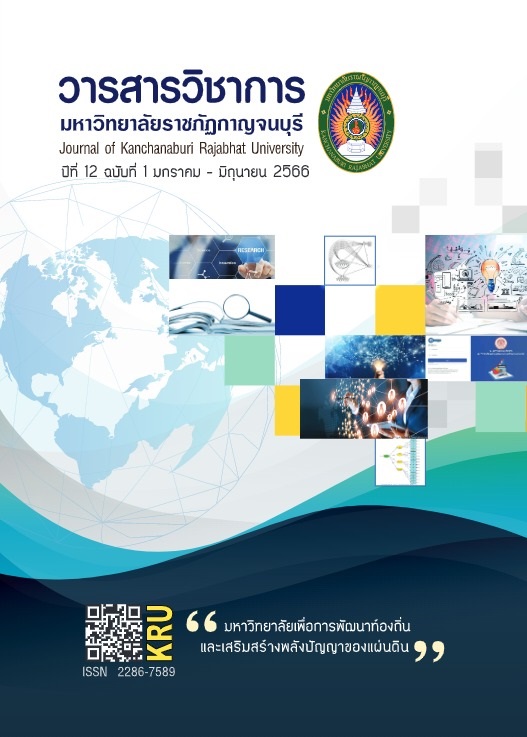MOVEMENT FOR EARLY CHILDHOOD DEVELOPMENT (4-6 YEARS)
Main Article Content
Abstract
Early childhood movement is very important and can promote physical, emotional, social, and intellectual development. It is imperative that early childhood is developed continuously. Whether it is in the form of physical abilities, public activities, assertiveness or self-help, the selection of movement activities must be uncomplicated and the environment must be adapted to generate interest in participating in the activities and facilitate children to engage more in movement activities. This article therefore aims to present the importance of movement for the development of early childhood in children aged 4-6 years. The author has analyzed and synthesized related research papers, textbooks and academic documents both published both domestically and internationally for the benefits of early childhood teachers, physical education teachers, event organizers, parents, and people interested in the applications of movement for early childhood development.
Article Details

This work is licensed under a Creative Commons Attribution-NonCommercial-NoDerivatives 4.0 International License.
References
กุลยา ตันติผลาชีวะ. (2547). การจัดการเรียนรู้สําหรับเด็กปฐมวัย. กรุงเทพฯ: เอดิสันเพรสโปรดัก.
_______. (2551). การจัดกิจกรรมการเรียนรู้สำหรับเด็กปฐมวัย. กรุงเทพฯ: มิตรสัมพันธ์กราฟฟิค.
จารุทัศน์ วงศ์ข้าหลวง. (2563). ทักษะแห่งศตวรรษที่ 21 สำหรับเด็กปฐมวัย. ค้นเมื่อ พฤศจิกายน 25, 2564, จาก https://www.jarutus.com.
ณัฐิกา เพ็งลี, กรรวี บุยชัย. (2562). ความสำคัญของการสอนทักษะการเคลื่อนไหวพื้นฐานสำหรับเด็กปฐมวัย. ค้นเมื่อ พฤศจิกายน 5, 2564, จาก
http://edujournal.bsru.ac.th/publishes/2/articles/78.
บำเพ็ญ พงศ์เพชรดิถ, บุษบา อรรถาวีร์. (2560). รายงานการศึกษาปัจจัยที่มีผลต่อพัฒนาการเด็กปฐมวัยไทย ครั้งที่ 6 พ.ศ. 2560. ค้นเมื่อ พฤศจิกายน 7, 2564,
จาก http://cgtoolbook.com/books003/.
พิชิต ภูจันทร์. (2535). สรีรวิทยาการออกกำลังกาย. กรุงเทพฯ: โอเดียนสโตร์.
วรศักดิ์ เพียรชอบ. (2548). รวมบทความเกี่ยวกับ ปรัชญา หลักการ วิธีสอนและการวัดเพื่อประเมินผลทางพลศึกษา. กรุงเทพมหานคร: จุฬาลงกรณ์มหาวิทยาลัย.
_______. (2560). รายงานการจัดกิจกรรมกลางแจ้งสำหรับเด็กปฐมวัย. ค้นเมื่อ พฤศจิกายน 4, 2564,
จาก http:///files/multimpdf/image2018/B000090510.
สมพร สุทัศนีย์. (2554). มนุษยสัมพันธ์. กรุงเทพฯ: จุฬาลงกรณ์มหาวิทยาลัย.
สำนักงานคณะกรรมการการประถมศึกษาแห่งชาติ. (2545). คู่มือการจัดกิจกรรมเกมและกิจกรรมกลางแจ้ง
สำหรับเด็กก่อนประถมศึกษา. กรุงเทพฯ: กระทรวงศึกษาธิการ.
สำนักวิชาการ สำนักงานเลขาธิการสภาผู้แทนราษฏร. (2563). รัฐธรรมนูญแห่งราชอาณาจักรไทยพุทธศักราช 2560. ค้นเมื่อ พฤศจิกายน 21, 2564, จาก
สำนักวิชาการและมาตรฐานการศึกษา. (2560). แนวทางการจัดการเรียนรู้ ตามหลักสูตรการศึกษาขั้นพื้นฐานพุทธศักราช 2551. กรุงเทพฯ: สหกรณ์การเกษตรแห่ง
ประเทศไทย.
เยาวรัตน์ ปรปักษ์ขาม และพรพันธุ์ บุณยรัตพันธุ์. (2549). การเคลื่อนไหวร่างกายของคนไทย. ค้นเมื่อ พฤศจิกายน 19, 2564, จาก
http://putruksa.logspot.com/2013/04/blog-post_10.html
เยาวรัตน์ รัตนธรรม. (2561). การเพิ่มการรับรู้ด้านมิติสัมพันธ์ และความใส่ใจของนักเรียนปฐมวัยใช้กิจกรรมเคลื่อนไหวร่างกาย. วิทยานิพนธ์วิทยาศาสตรมหา
บัณฑิต สาขาวิชาการวิจัยและสถิติทางปัญญา วิทยาลัยวิทยาการวิจัยและวิทยาการปัญญา มหาวิทยาลัยบูรพา.
Gesell, Arnoid. (1940). The First Five Years of Life: A Guide to the Study of the Preschool Child. New York: Harper.
Heckman, J. J. (2011). The economics of inequality: The value of early childhood education.
ค้นเมื่อ พฤศจิกายน 19, 2564, จาก https:// files.eric.ed.gov/fulltext/EJ920516.pdf.


